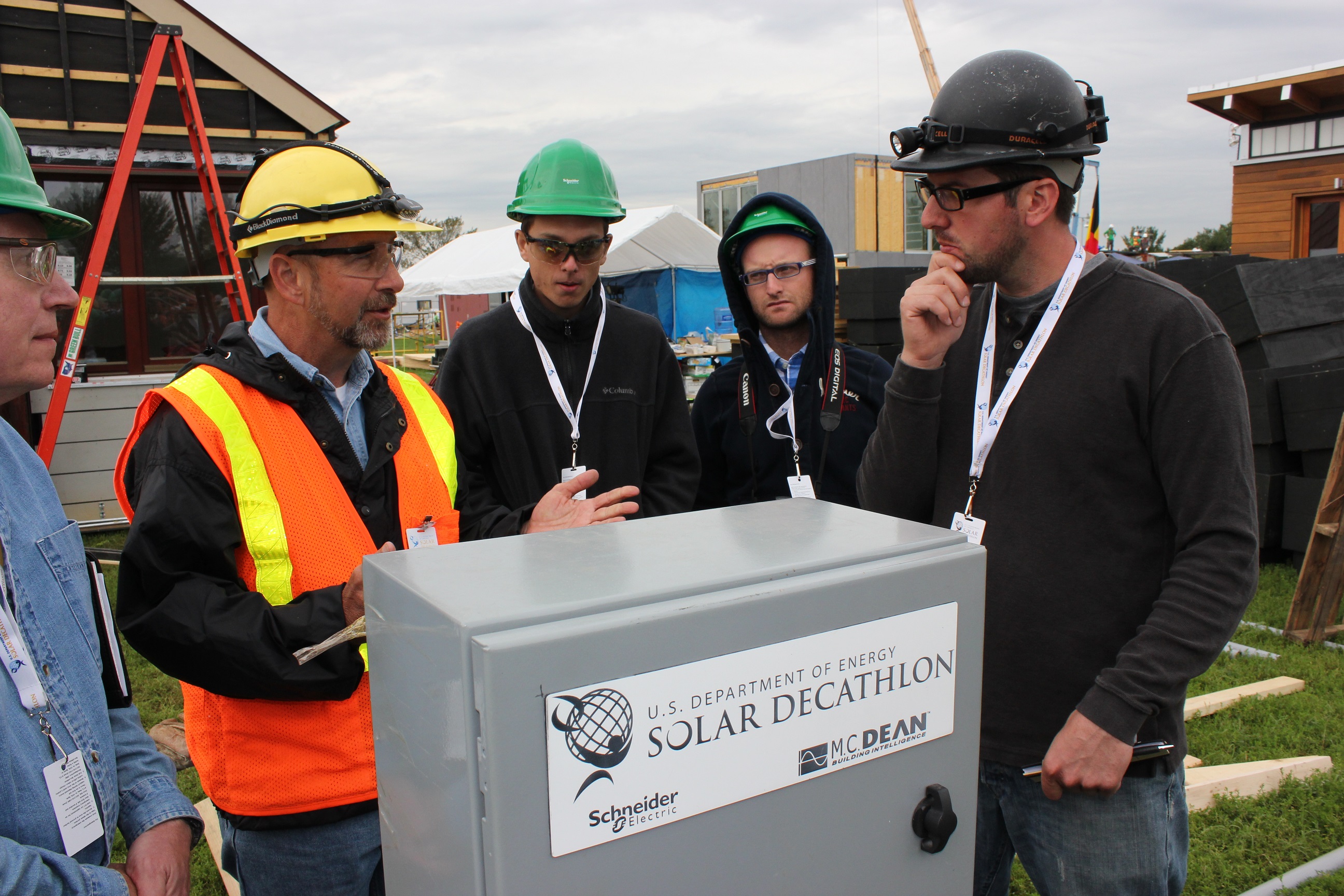Solar Decathlon Village Powered by Microgrid and Sponsor Support
Wednesday, June 25, 2014By Carol Laurie
Since the U.S. Department of Energy Solar Decathlon 2009, a temporary, ground-laid electrical grid (or “microgrid”) has connected Solar Decathlon houses with one another and the local utility. The village microgrid allows excess power generated by the houses’ solar electric systems to be sent back to the larger city utility grid and its customers. The microgrid also enables the competition houses to draw energy from the utility when consumption exceeds production.
In Solar Decathlon 2002, 2005, and 2007, Solar Decathlon houses were grid-independent and ran off batteries that stored the electricity generated by their solar photovoltaic systems. In 2009, competition organizers decided to connect the houses to the electrical grid to better reflect the typical residential configuration found today. By connecting each house to the local electric utility grid, the microgrid enables houses in the Solar Decathlon village to function the same way solar households throughout the United States operate.

Byron Stafford (second from left), who served as the Solar Decathlon site operations manager from 2002 until 2013, consults with a team member from the City College of New York (right) about interconnecting the team’s house with the 2011 village microgrid. Stafford and his team of engineers transitioned the solar village from battery storage to grid power by installing the first Solar Decathlon village microgrid in 2009. (Credit: Carol Anna/U.S. Department of Energy Solar Decathlon)
Energy Balance Contest
The microgrid also changed the Energy Balance Contest, for which teams earn points based on their energy production and energy consumption. Before the microgrid, organizers measured the flow of energy in and out of battery storage during the competition. Now, the energy each house produces and consumes over the course of the competition is measured with a bidirectional utility meter.
When the sun shines, the solar system produces electricity that is used to power appliances, lights, mechanical systems, and even an electric car. If the system produces more electricity than the house needs, excess electricity flows from the house back into the microgrid and the larger utility grid. At night, or when the demand for energy exceeds the amount of energy being produced, the house consumes electricity from the grid.
In this way, the microgrid provides two-way power flow and enables the Solar Decathlon village to operate continuously regardless of available sunlight or household electricity requirements.
Powered by Sponsors
The Solar Decathlon depends on sponsors to provide the supplemental expertise and equipment needed to design, build, and operate the village microgrid.
For the 2009, 2011, and 2013 competitions, Solar Decathlon sponsor Schneider Electric provided microgrid design and engineering services as well as electrical distribution equipment required to safely and reliably connect the Solar Decathlon village to the local utility. In 2011 and 2013, Schneider Electric also provided a proprietary metering and data system that enabled online and onsite demonstrations of real-time electricity generation and consumption in the village.
The microgrid also depends on local utilities to enable interconnection of the main utility grid with the Solar Decathlon microgrid. Edison International (the parent company of Southern California Edison) provided this crucial sponsorship in 2013, and Pepco stepped up to the plate for Washington, D.C., events in 2009 and 2011.
Other microgrid sponsors include MicroPlanet, which sponsored voltage regulation equipment in 2013, and M.C. Dean, which installed the microgrid in 2011.
All of these sponsors worked together to provide a valuable addition to the competition.
Carol Laurie is the communications manager of the U.S. Department of Energy Solar Decathlon.
Tags: Energy Balance, Solar Decathlon, Sponsors, Technology Spotlights
